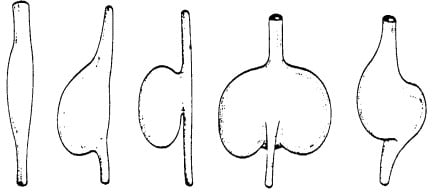Supplies needed:
Ducks don't have crops like chickens, theirs look more like the one on the left in this picture:

Here is the size 8



Here are the sizes:

The 30
http://www.greatmedicalsupplies.com...l-purpose-robinsonnelaton-catheter-351030.htm
The 28
http://www.greatmedicalsupplies.com...l-purpose-robinsonnelaton-catheter-351028.htm
The 26
http://www.greatmedicalsupplies.com...l-purpose-robinsonnelaton-catheter-351026.htm
The 24
http://www.greatmedicalsupplies.com...l-purpose-robinsonnelaton-catheter-351024.htm
The 22
http://www.greatmedicalsupplies.com...l-purpose-robinsonnelaton-catheter-351022.htm
The 20
http://www.greatmedicalsupplies.com...l-purpose-robinsonnelaton-catheter-351020.htm
The 18
http://www.greatmedicalsupplies.com...l-purpose-robinsonnelaton-catheter-351018.htm
The 16
http://www.greatmedicalsupplies.com...l-purpose-robinsonnelaton-catheter-351016.htm
The 14
http://www.greatmedicalsupplies.com...l-purpose-robinsonnelaton-catheter-351014.htm
The 12
http://www.greatmedicalsupplies.com...l-purpose-robinsonnelaton-catheter-351012.htm
The 10
http://www.greatmedicalsupplies.com...l-purpose-robinsonnelaton-catheter-351010.htm
The 8
http://www.greatmedicalsupplies.com...l-purpose-robinsonnelaton-catheter-351008.htm
More to come.
-Kathy
- Digital Kitchen Scale
- Pedialyte or Gatorade
- Kaytee Baby Bird Food
- Size 8 or 10 french rubber catheter or crop tube
- 1 ml syringe
- Incubator or hatcher
Ducks don't have crops like chickens, theirs look more like the one on the left in this picture:

Here is the size 8
Here are the sizes:
French
Gauge Diameter
(mm) Diameter
(inches)
3 1 0.039
4 1.33 0.053
5 1.67 0.066
6 2 0.079
7 2.3 0.092
8 2.7 0.105
9 3 0.118
10 3.3 0.131
11 3.7 0.144
12 4 0.158
13 4.3 0.170
14 4.7 0.184
15 5 0.197
16 5.3 0.210
17 5.7 0.223
18 6 0.236
19 6.3 0.249
20 6.7 0.263
22 7.3 0.288
24 8 0.315
26 8.7 0.341
28 9.3 0.367
30 10 0.393
32 10.7 0.419
34 11.3 0.445
Gauge Diameter
(mm) Diameter
(inches)
3 1 0.039
4 1.33 0.053
5 1.67 0.066
6 2 0.079
7 2.3 0.092
8 2.7 0.105
9 3 0.118
10 3.3 0.131
11 3.7 0.144
12 4 0.158
13 4.3 0.170
14 4.7 0.184
15 5 0.197
16 5.3 0.210
17 5.7 0.223
18 6 0.236
19 6.3 0.249
20 6.7 0.263
22 7.3 0.288
24 8 0.315
26 8.7 0.341
28 9.3 0.367
30 10 0.393
32 10.7 0.419
34 11.3 0.445
The 30
http://www.greatmedicalsupplies.com...l-purpose-robinsonnelaton-catheter-351030.htm
The 28
http://www.greatmedicalsupplies.com...l-purpose-robinsonnelaton-catheter-351028.htm
The 26
http://www.greatmedicalsupplies.com...l-purpose-robinsonnelaton-catheter-351026.htm
The 24
http://www.greatmedicalsupplies.com...l-purpose-robinsonnelaton-catheter-351024.htm
The 22
http://www.greatmedicalsupplies.com...l-purpose-robinsonnelaton-catheter-351022.htm
The 20
http://www.greatmedicalsupplies.com...l-purpose-robinsonnelaton-catheter-351020.htm
The 18
http://www.greatmedicalsupplies.com...l-purpose-robinsonnelaton-catheter-351018.htm
The 16
http://www.greatmedicalsupplies.com...l-purpose-robinsonnelaton-catheter-351016.htm
The 14
http://www.greatmedicalsupplies.com...l-purpose-robinsonnelaton-catheter-351014.htm
The 12
http://www.greatmedicalsupplies.com...l-purpose-robinsonnelaton-catheter-351012.htm
The 10
http://www.greatmedicalsupplies.com...l-purpose-robinsonnelaton-catheter-351010.htm
The 8
http://www.greatmedicalsupplies.com...l-purpose-robinsonnelaton-catheter-351008.htm
More to come.
-Kathy
Last edited:


